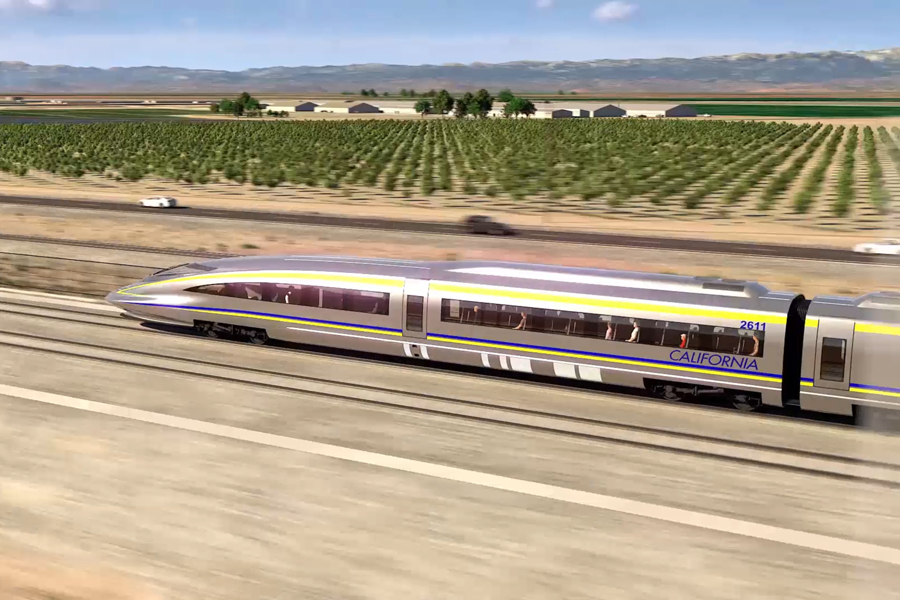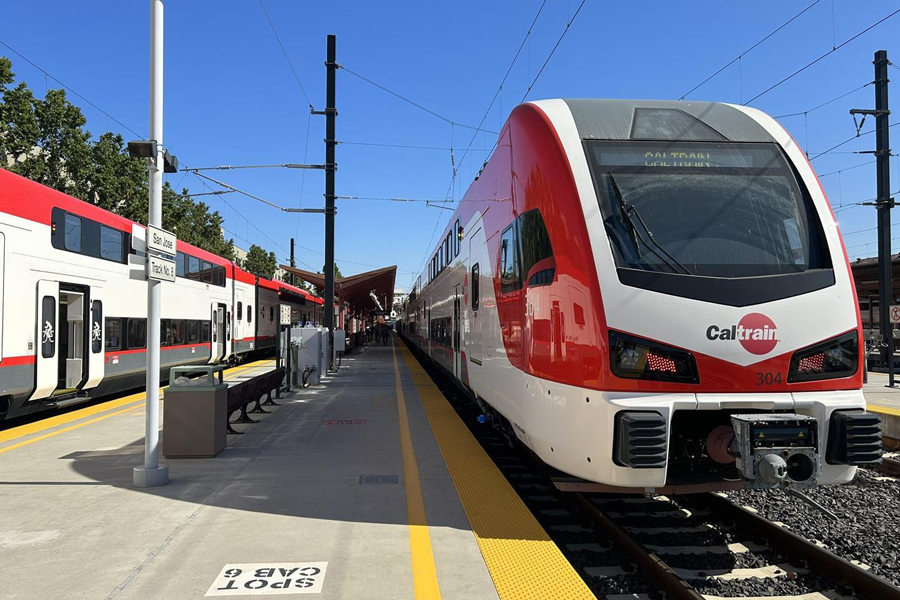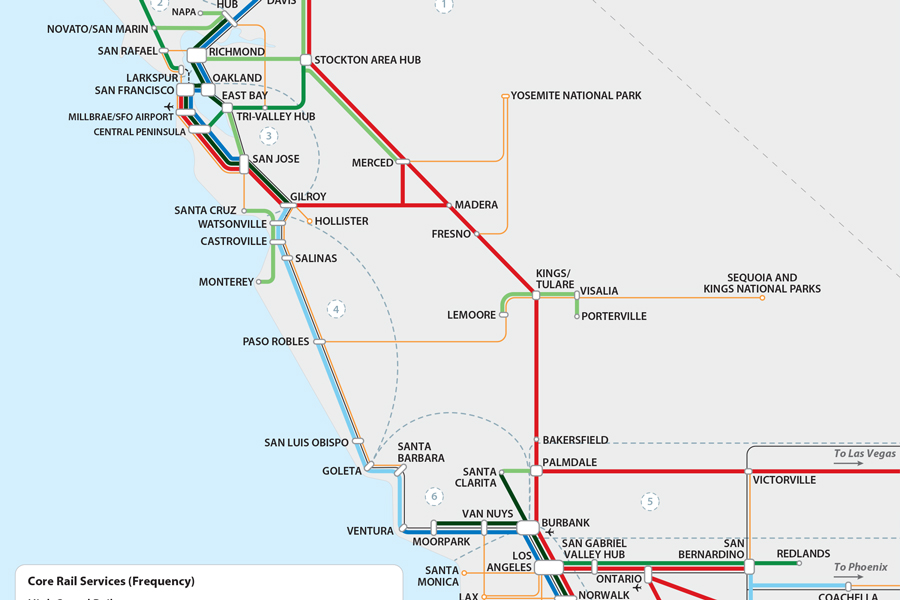Backbone of a Statewide Network
California is building a 220-mph high-speed line to link Los Angeles to San Francisco in under 3 hours.
The first 171-mile segment, from Merced to Bakersfield, is under construction.
It is the center of California’s integrated network plan for high-speed rail, regional rail, and buses and will directly serve a densely populated region that’s about the size of South Carolina.
It’s a great place to demonstrate the power of 220-mph high-speed trains for the first time in the U.S.
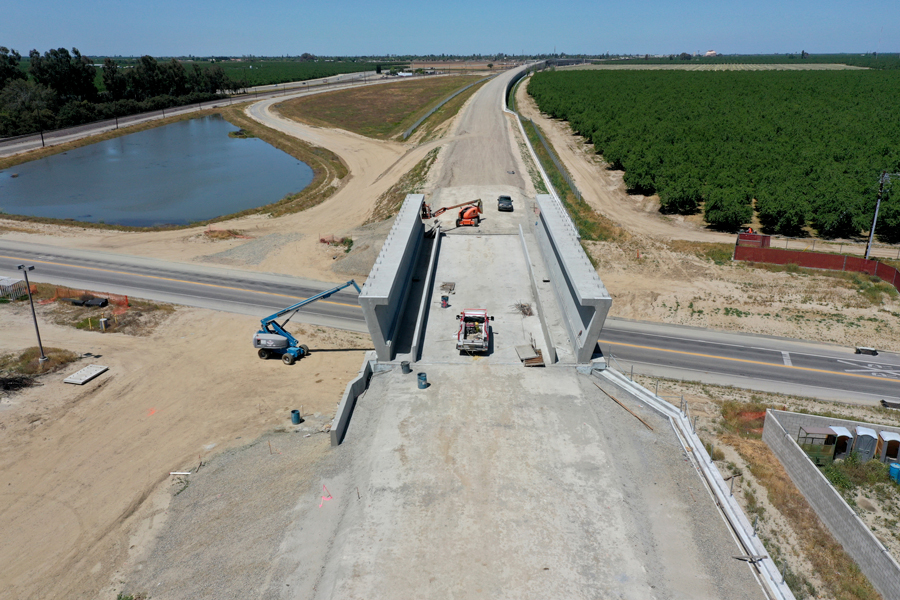
The Kimerlina Viaduct just south of Wasco, CA.
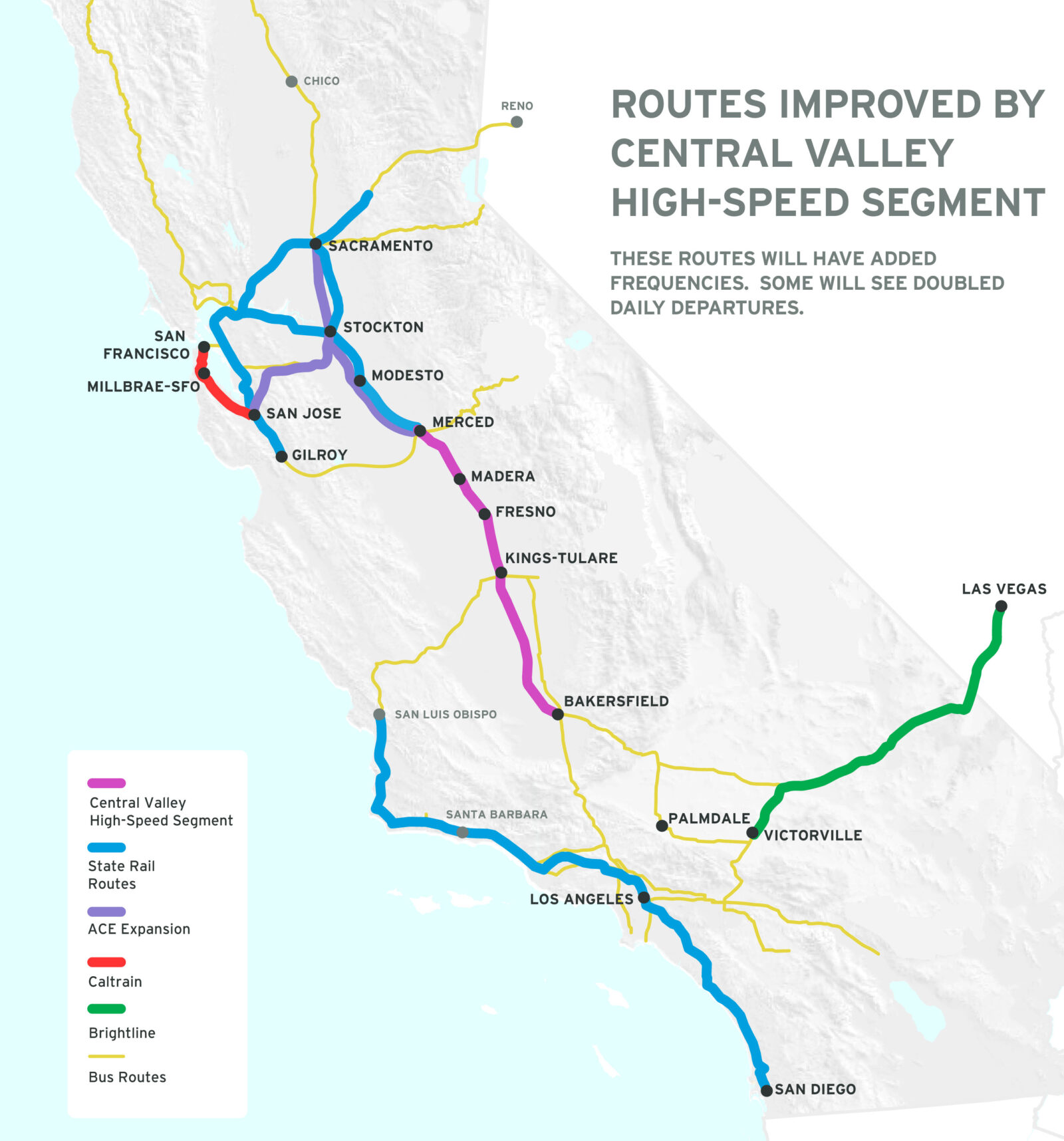
Why the Central Valley?
The ultimate goal is a thriving network of high-speed and regional trains to link all of California. Getting there requires a solid foundation and a starting point with statewide impact.
That’s exactly what the Central Valley segment delivers:
- Population of 4 million people
- Flat enough to build long stretches of 220-mph track without drilling tunnels
- An extensive network of connecting trains and buses already in place
Advanced planning is completed for connecting the Central Valley to the Silicon Valley and Los Angeles.
First Phase Outcomes
The Central Valley segment will have huge benefits on its own and is the foundation for the whole system.
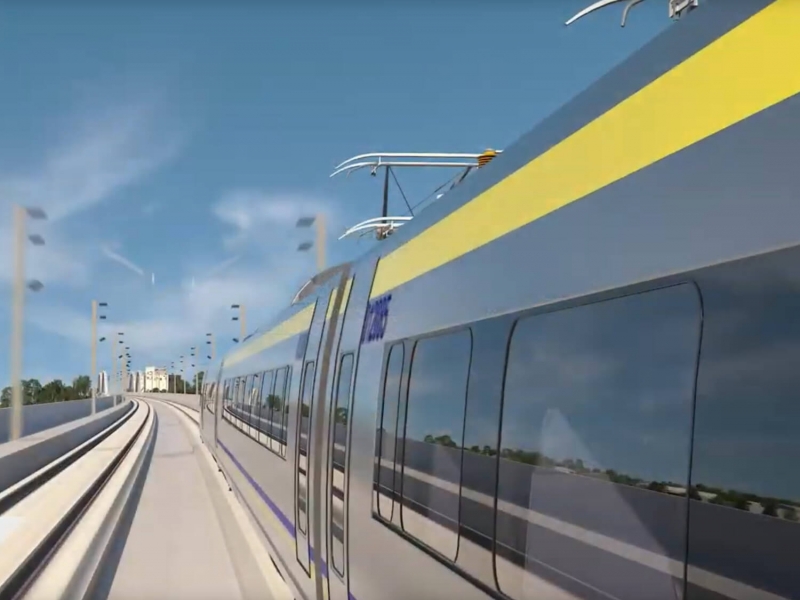
90 minutes Merced-Bakersfield
The trip time from Bakersfield to Merced will be cut in half from today’s three-hour Amtrak trip.
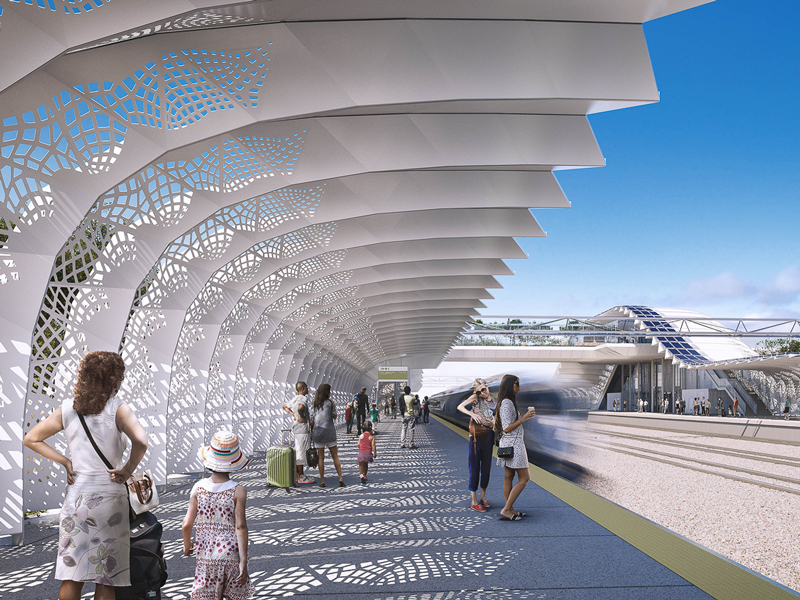
18 daily roundtrips
The number of daily departures will more than double from Amtrak’s 7 per day.
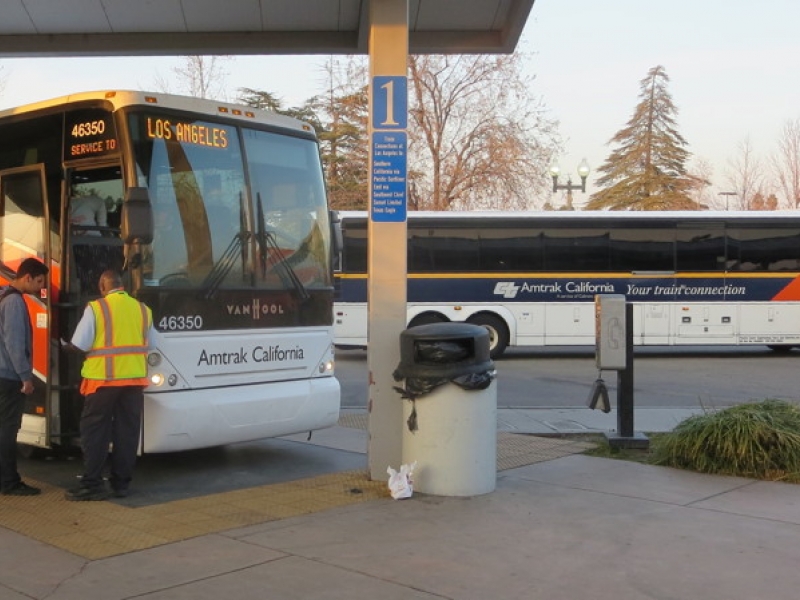
More connecting services
All of the train and bus routes that connect with the Central Valley stations will see more daily departures. Most will double.
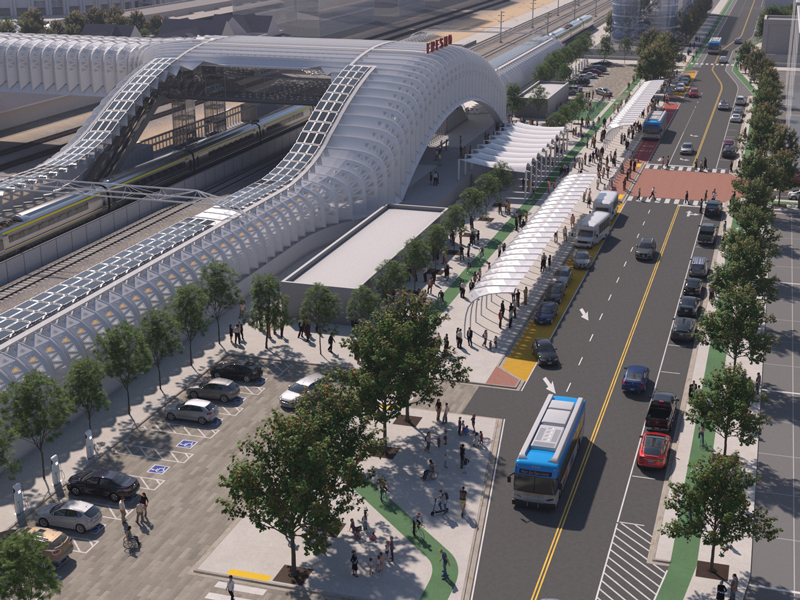
New Stations
New stations will be built at Bakersfield, Tulare, Fresno and Merced.
Statewide Impact
The Central Valley line will have ripple-out effects across the entire state. It will boost ridership on the buses and trains that connect the line to the Bay Area and Los Angeles, by shortening all train trips between northern and southern California.
Riders of the connecting routes will benefit from increased frequencies, even if they don’t actual use the Central Valley segment.
It is estimated that the network’s ridership and revenue will roughly double, while the state’s contribution to ongoing operating expenses will decline by $20 million a year.
These benefits—more ridership, more revenue, and lower costs—will build the political will needed to build the new connections across the Pacheco and Tehachapi Passes.
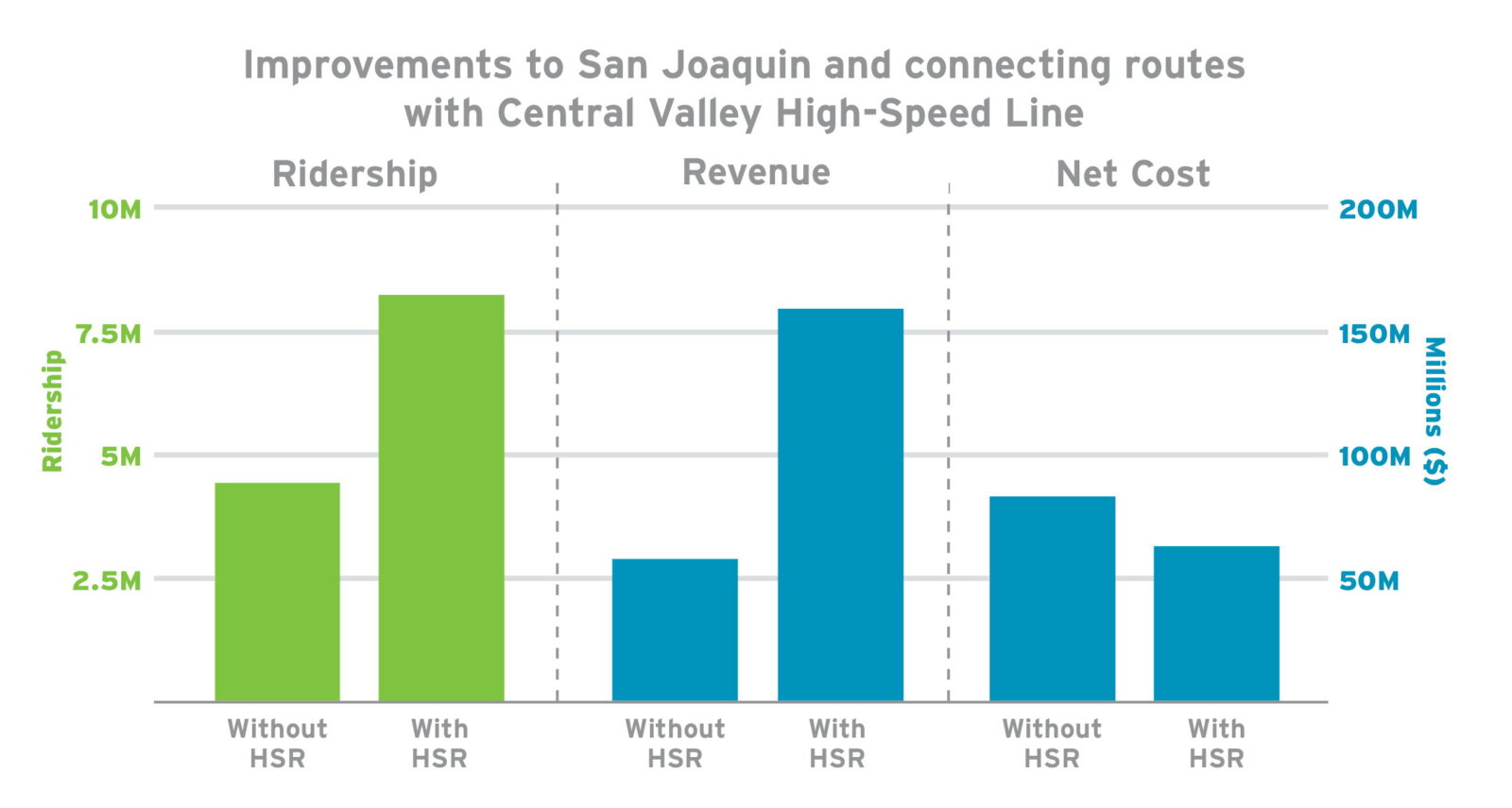
The Central Valley segment will double the performance of the existing network.
National Impacts – Today and Tomorrow
As the first high-speed line under construction, the Central Valley line is breaking ground for future high-speed lines. For example:
- Forcing changes to outdated federal regulations. For example, railroads can now run light trainsets that start and stop faster than heavier trains.
- Teaching lessons that can be applied to new projects across the North American context.
- Creating and sustaining a supply chain for domestic high-speed rail manufacturers.
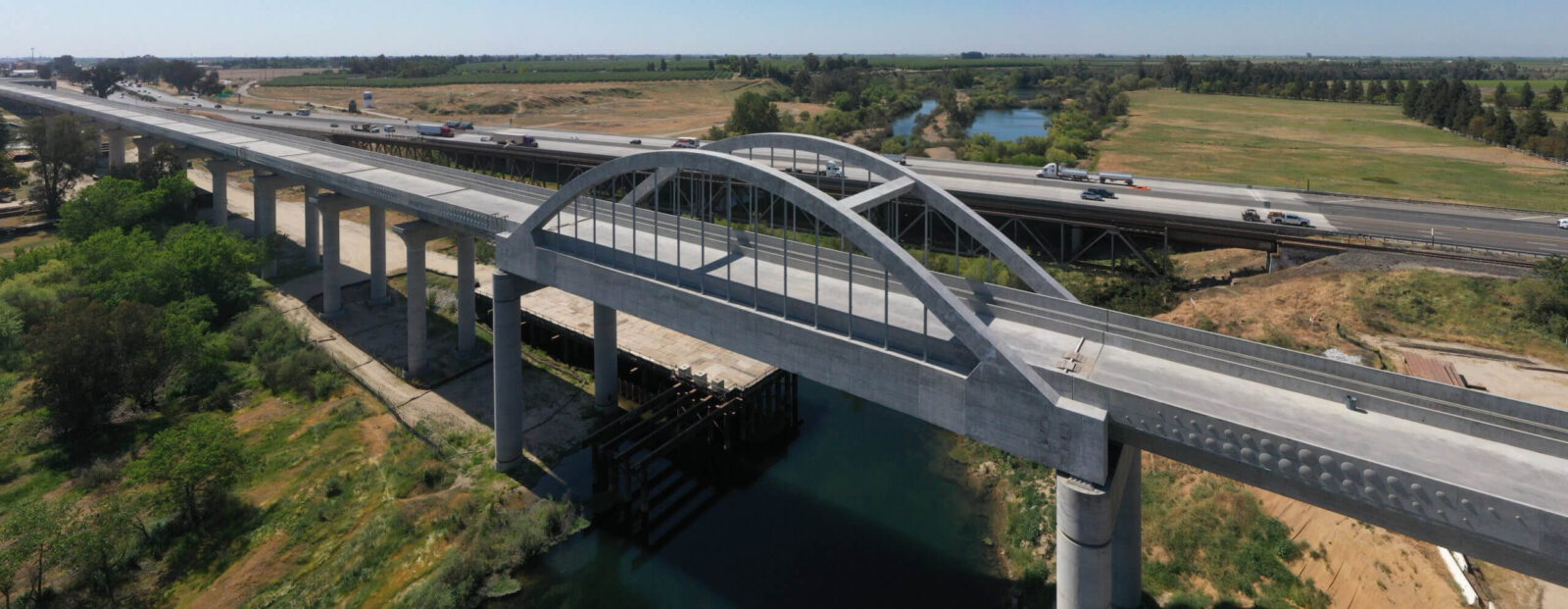
The nearly complete 4,740-foot long San Joaquin River Viaduct – one of the most recognizable Central Valley construction projects – is ready for tracks and high-speed trains.
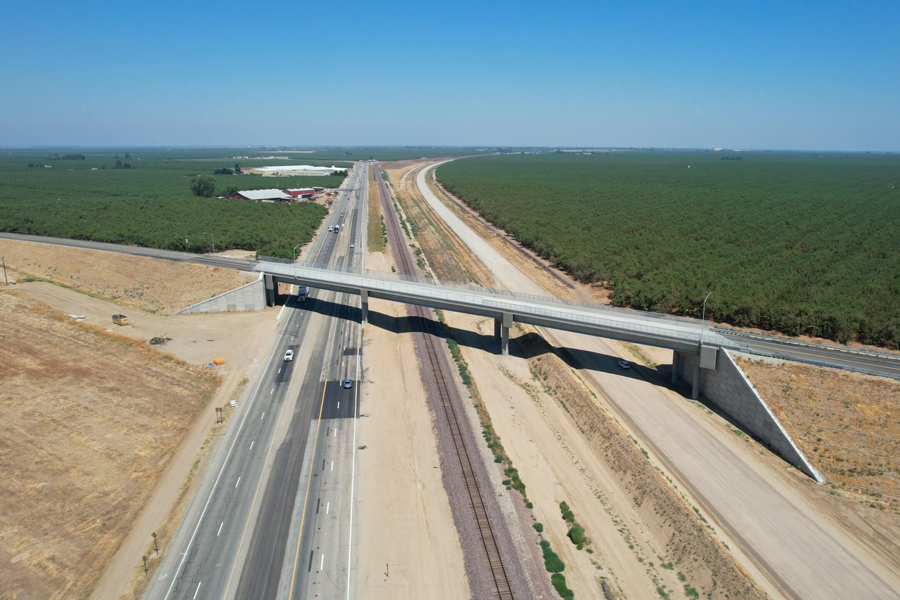
The new Merced Avenue overpass takes traffic over SR 43, as well as BNSF and future high-speed rail lines.
A federal program is needed to get it done.
California is far ahead of the rest of the country in developing high-speed and regional rail. But they are unique. Most of their routes do not cross state lines.
Most states will require an Interstate Railway Program to build multi-state networks. And California cannot achieve its full potential without a federally-led program.
The recent Bi-Partisan Infrastructure Law is a great step in the right direction. Much more needs to be done.
Please join us in asking Congress to create an Interstate Railway Program.
Related Content
California State Page
California is at the forefront of high-speed and regional rail
California is Building High-Speed Rail
A new high-speed line linking Los Angeles to San Francisco will be a game-changer for the most aggressive state rail program in the country.
Caltrain: Transforming Regional Rail
Caltrain, the Silicon Valley’s railroad, is being modernized to be the first true regional rail line in the U.S.
California Integrated Plan
The visionary California rail plan will produce a stunning increase in ridership and revenue.

Take Action
The country needs an Interstate Railway Program, like the Interstate Highway Program, to take full advantage of the community, economic, and environmental benefits of trains.
Please join with us in asking Congress to create a national railway program to re-connect America with fast, frequent, and affordable trains.
